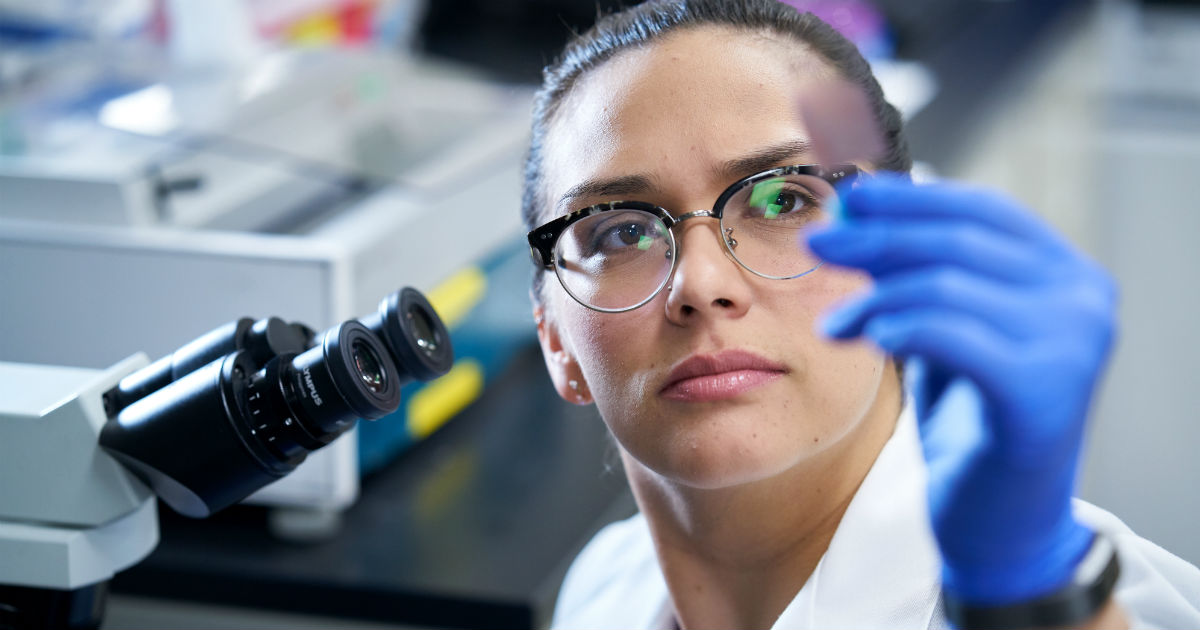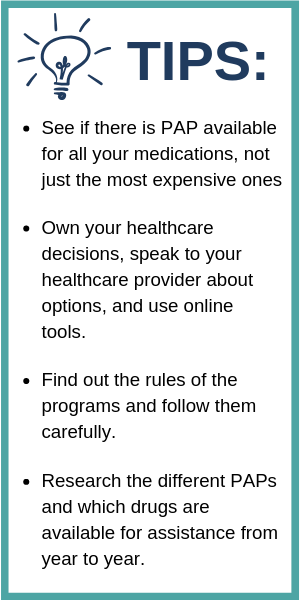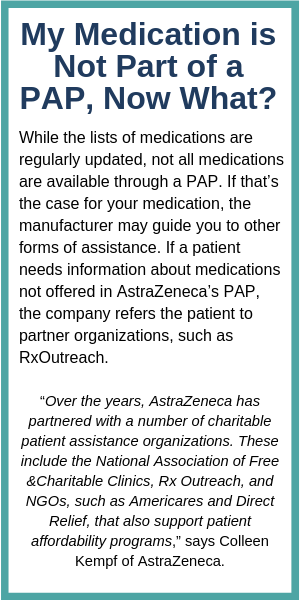This podcast was originally published by the Cleveland Clinic on April 23, 2010 here.
How common is ovarian cancer and how do symptoms typically present? What are the risk factors? How is ovarian cancer diagnosed and treated? Join Chad Michener, MD as he answers these questions and many more.
Podcast Transcript:
Scott Steele: Butts & Guts, a Cleveland Clinic podcast, exploring your digestive and surgical health from end to end.
Hi and welcome to another episode of Butts & Guts. I’m your host, Scott Steele, the chairman of colorectal surgery here at the Cleveland Clinic in beautiful Cleveland, Ohio. And we’re very glad today to have Dr. Chad Michener, who is the interim chair for the department of sub specialties in women’s healthcare. Chad, welcome to Butts & Guts.
Chad Michener: Thanks, Scott.
Scott Steele: So we always like to start out this with a little bit of background about our guests. And so tell us a little bit about where you’re from. Where’d you train and how did it come to the point that you’re here at the Cleveland Clinic?
Chad Michener: Long story, actually, so I actually grew up in Springfield, Ohio, one of four kids. I had three sisters. Regular high school, thought I was actually going to go to art school, and kind of out of the blue decided that wasn’t going to be a great stable choice for me. So I went to college with no real plans and kind of just fell into medical school. And then on through went into training for obstetrics-gynecology, and then really enjoyed the surgical aspect. So did a cancer training fellowship at Cleveland Clinic, actually, and then stayed on board for the last 15 years.
Scott Steele: Fantastic. Well, we’re lucky to have you here. So today we’re going to talk a little bit about ovarian cancers. So give us the 50,000-foot view of ovarian cancer. What is it, and how does it affect the daily lives? What are some symptoms?
Chad Michener: So ovarian cancer is one of the unfortunate diseases that we find late. So it’s about 23,000 cases a year. We see, unfortunately, about 14,000 women die because we don’t often find it early. And it’s really because of the symptoms don’t always show up until pretty late. So the symptoms are pretty vague. So it kind of fools patients. It fool’s physicians sometimes because it’ll show up as bloating, nausea, I can’t really eat, I have heartburn, relatively new symptoms for patients. And so oftentimes, they’ll go down the pathway of, “Oh, you have an ulcer,” or things of that nature. And so there’s a little bit of a delay in diagnosis there, but generally speaking, we’ll still find that in stage three or stage four about 75% of the time.
Scott Steele: So we use a lot of these terms, stages this and that. Before we get to the actual staging of it, talk to me a little bit about risk factors. There’s a lot of risk factors with every cancer. Are there risk factors associated with ovarian?
Chad Michener: So most of the risk factors are things that are not typically preventable. So there’s no big family component; although, about 25% are going to be genetic when you really do all the genetic analysis on patients. However, there are some things that can be protective. So people who have been on birth control pills, it can reduce their risk by 40 to 50% after using those for five years. Having children is protective, breastfeeding is protective. Essentially, anything that limits the number of menstrual cycles a woman has in her lifetime, is things that can decrease that as much as possible. Things you don’t really have control over are what age they start having menstrual cycles or how many years they have menstrual cycles. So the little things in between become important.
Scott Steele: So when you have these type of symptoms, is it spread all over the place, or how do you differentiate between what is “normal” and what is something that’s concerning? Is there any one of those symptoms that are real red flags that you would say to the women to get in and see their doctors?
Chad Michener: So not any one symptoms. So they actually looked at studies of healthy women going in for breast screening versus women with pelvic masses that were benign and then, of course, a group of ovarian cancer patients, and the symptoms were actually fairly similar. The big difference was is that patients with ovarian cancer, the symptoms were relatively new to them and they happen more days than not over the course of three or four weeks. So if you’ve got new symptoms that aren’t going away, they’ve been lasting for three or four weeks, they’re there most days, it’s probably worth a discussion; although, a lot of times it’s not going to be ovarian cancer. It’ll be sort of the more common other things.
Scott Steele: Okay, so I’m a woman. I’m experiencing these symptoms. I’m going to come into your office for an appointment. What can they expect during that appointment and how is this diagnosed?
Chad Michener: So most times they’re going to do a pelvic exam and a regular exam on the abdomen. If they don’t find much there, or let’s say they feel maybe there is some fullness or thickening in the pelvis, then usually that’ll be followed with an ultrasound. And then depending on what the ultrasound shows, they may get more imaging to follow. We don’t often use markers to look for this because most times the marker can be nonspecific, so it can be elevated for other things, essentially.
Scott Steele: And by a marker, you mean blood tests?
Chad Michener: Blood tests, yeah. So in this case, most times we’re talking about a blood test called a CA 125. We don’t use it for screening because it can be elevated for other reasons. But in somebody who has, say, an ovarian cyst or a pelvic mass, that may be a test that follows up to the ultrasound results.
Scott Steele: And so you have to have a tissue diagnosis in many of these cancers. Is there something that you do to get a tissue diagnosis to confirm that it’s ovarian cancer?
Chad Michener: So we do, if it looks like there’s a lot of spread already and we’re not quite sure that that’s what it is. Sometimes we’ll do a biopsy that the radiologist will do, using a CT scan or an ultrasound to guide their biopsy. But oftentimes, we’ll actually take patients to the operating room to make the diagnosis ourselves, particularly if it just looks like an ovarian cyst, maybe with some other questionable features. And most times that’ll be done with a laparoscopy, so a little incision through the belly button with a camera. And then they can put in a couple extra working channels to take out cyst, take out the ovary, and then get a diagnosis that way.
Scott Steele: So before we go into the actual treatment, and let’s just say that they’re facing this operation that you’re talking about, is there anything that women can do to prepare themselves for that operation?
Chad Michener: Nothing particular. It’s obviously a little scary for them. So trying to just sort of do normal routine stuff is helpful. There will be sort of things that will follow the day before surgery. We’ll have them be on a liquid diet rather than on a kind of heavy diet so that it can kind of clean stuff out through the intestines and make surgery potentially a little bit easier. But other than that, nothing really per se that we get patients ready for.
Scott Steele: So in other cancers, you have radiation therapy, oncology, you have surgery, you have chemotherapy up front, chemotherapy afterwards. What’s the initial therapy for ovarian cancer? And as you lead into that, can we go back to that concept you talked about, about staging? What are the different stages of it?
Chad Michener: So stages of ovarian cancer. As a general rule, you’re going to have stage one, which is just confined to the ovary and there’s a little sub stages of that. Stage two would be that it’s outside of the ovary but still confined to the pelvis itself, so it hasn’t spread into the abdominal cavity at all. Stage three would be abdominal involvement, and that can be really anything. It tends to spread on the surfaces of the organs. And so you’ll see little implants, and they can cover the intestines, the liver, a fatty apron called the omentum that hangs off to the intestines is a very common site that we see. And then anything that’s either inside of one of those organs, let’s say there’s a cyst in the liver that’s involved or if it’s in the chest, then it would be a stage four.
Treatment is based on those stages. So if we think it’s confined to stage one, or at least it appears to in surgery, then we do a staging operation where we would take out the ovary, usually the uterus and the other ovary as well. And then we would do lymph node biopsies. We would biopsy the omentum and then biopsy different sites in the abdominal cavity where we often see spread and then followed by chemotherapy in most but not all cases. Advanced stage disease, we spend a lot of time up front getting imaging, sometimes getting biopsies before going to the operating room, to figure out what the diagnosis is and how much involvement there is, to decide if we think we’re going to be able to remove all of the tumor surgically.
If we think that that’s going to be not possible or unlikely, then oftentimes, we’ll start chemotherapy as our first treatment after a biopsy diagnosis and then plan surgery after a few rounds of chemotherapy. So that’s called neoadjuvant chemotherapy. In surgery, we’ll do what we call a debulking operation. We’ll go in, we’ll take out everything possible that we can, and sometimes that can be done laparoscopically. Sometimes it has to be done as a large open incision. And then, if we’re able to shrink everything down surgically, we actually can offer hyperthermic intraperitoneal chemotherapy, or often called HIPEC, and that actually has been associated with better outcomes in people who have neoadjuvant chemo therapy first.
Scott Steele: That’s kind of honed down in some specifics there. So what can women expect with chemotherapy? And when you talk about a few cycles, how long is that? What side effects do they get from that? Is their hair going to fall out, or is it something that they can tolerate well? If they’re having that bloating, does that get better?
Chad Michener: Yeah. So chemotherapy for ovarian cancer generally comes in three-week cycles, so 21 days. And sometimes that’ll be weekly treatments, sometimes be just once every three week treatments. It’s actually a fairly tolerable regimen, but there are common side effects such as hair loss. Some people will experience some nausea, but not a lot of vomiting with that regimen. They can get constipation or diarrhea. It’s pretty variable, but those can be side effects of our anti-nausea drugs. And then sometimes people were experienced neuropathy, so they get numbness or tingling in their hands or their feet. And that can be reversible over time, but we do watch that carefully because one of the drugs is associated with neuropathy more than others. After three cycles of that, so nine weeks, we would get another set of cat scans and then decide if it’s something that we can take to the OR at that point.
Scott Steele: So when you go to the operating room and you’re trying to get out this tumor or multiple tumors in there, is it something that you have to take out other organs? Do people wake up? Do they have to wear a bag? What does that surgery all involve?
Chad Michener: Yeah, generally speaking it’s going to be hysterectomy, and then the tubes and the ovaries, the omentum commonly. And then the other organs that can be involved oftentimes can be the appendix, the spleen, the intestines, whether that be small intestine or large intestine. And probably about 20% to 30% of patients will have some sort of a intestinal surgery during their debulking operation, most commonly the colon that sits behind the uterus. But most times, we’re able to take that out, put the colon back together, and there’s no ostomies or bags that patients would have to wear. Probably less than 5% of the time, we’ll end up doing a colostomy or an ostomy that is a temporary in most cases. Once in awhile it will be permanent, but that’s a very, very small percentage of patients.
Scott Steele: So one of the things we know is that there’s different biologies associated with not only just classes of tumors, but within each class of tumor, individual variations exist. So there was a study that recently came out regarding a more of GI cancers about the HIPEC that you talked about, that heated intraperitoneal chemotherapy, that showed that HIPEC wasn’t as advantageous as just getting the tumor out alone. If I heard you right, that HIPEC’s a little bit different beast in terms of the ovarian cancer. What is the role of HIPEC, and who would be a candidate for HIPEC versus just the debulking surgery?
Chad Michener: So HIPEC for ovary cancer, in fact, is actually relatively new. It’s not done in a lot of centers. And so we’re still trying to figure out exactly who the best patients are for this. As a general rule, we haven’t used it based on cell type. So if it’s an epithelial ovarian cancer, whether it’s serous or mucinous or clear cell or endometrioid, all of those patients are potential candidates, assuming that they’re having a good response to chemotherapy and they have a near complete or near complete debulking surgery. We don’t often use it for what we call germ cell tumors or stromal tumors, which we typically will see in younger women, kind of different population. We don’t know that, say, mucinous tumors are better, which is commonly what it was used for for GI tumors. But I think we just don’t have the data yet. So we kind of offer it to everybody who we’re doing a debulking operation on who’s had chemo up front because there is a survival advantage there, at least in the one study.
Scott Steele: So how long can women expect to be in the hospital after this? Is it a pretty safe surgery to recover from?
Chad Michener: Yeah, people do pretty well. So all complications, including wound infections or anything of that nature, bladder infections, you’ll see that in somewhere between 15% and 20% of patients, usually minor complications. Major complications like blood transfusions and things, readmissions to the hospital, retake backs to the operating room, usually we’ll only see that in about 5% of patients depending on the center. Most times, they’re in the hospital for anywhere from about three to 10 days. And it really depends on how much is done in surgery. If there’s bowel surgery or not bowel surgery, if they have a large transfusion for bleeding, they have to go to the ICU, they’ll end up staying longer in the hospital. But I think, as a general rule, people will be usually home within three to 10 days.
Scott Steele: And do they have to get follow up chemotherapy?
Chad Michener: Yeah, so if they started with chemotherapy, then usually we’ll finish with three more cycles of chemotherapy, so an additional nine weeks. And we generally try to start that three or four weeks after surgery. If they didn’t get chemotherapy up front and we just took them for a debulking surgery, or if they had early stage disease, then usually they’ll get all of their chemotherapy after, which usually consists of six cycles of chemotherapy.
Scott Steele: One of the things that you had mentioned was a little bit about the younger women population was a little bit different group, but can you talk a little bit about … I’m sure this does affect some younger women. Is there a role for kind of preserving fertility or egg freezing or anything like that? And also, is there a role for genetic testing?
Chad Michener: So fertility in younger women, we do try to preserve, in fact. And if it is, let’s say, a germ cell tumor, so a different form of ovary cancer, usually affects women in their teens, twenties, not so common after the thirties. Oftentimes, you can take one ovary out, do the biopsies for lymph nodes and things, and leave the other ovary. Oftentimes, do chemotherapy and then they’ll still maintain their fertility afterwards. There are some other things you can do. We’ll usually have them see one of our infertility experts and talk about either protective drugs for the ovaries during chemotherapy or we do offer them the potential to go through a cycle of intro vitro fertilization, freeze eggs, freeze embryos if we think they have time for that. Or sometimes I’ll actually harvest and freeze part of the ovarian tissue as well. So that would be that group.
It’s harder to do in people with advanced disease, obviously, because they’ve got disease covering a lot of areas. So typically, we won’t recommend fertility preservation in that specific sense. But sometimes we’ve taken out ovaries, left uterus behind if the uterus doesn’t look involved, and then there’s ways to do donor eggs and things like that for fertility in the future if they do well. The second question was genetic testing. And for that we actually offer genetic testing to all of our women with epithelial ovarian cancer, so the more classic ovarian cancer that we talk about, because about 20% to 25% of people will have some gene mutation in their family.
And that becomes important for two reasons. One is that that can be passed on about half of the time, so with each pregnancy there’s a 50% chance of passing that gene on. And then secondly is we actually utilize that as part of our treatment now with a group of drugs called PARP inhibitors, and those are oral medications that are taken either with or most times following chemotherapy, and they have a specific function in patients with BRCA mutations or similar mutations. And so it becomes an important part of the treatment paradigm for those patients as well.
Scott Steele: What if you have a woman out there that says, “Listen, I don’t get this because I get a yearly pap smear.”
Chad Michener: Yeah, that’s a common misconception. I think that people think they’re getting checked for this all the time when they go for their pap smear, and pap smears are really meant to look for cervical cancer and that’s it. It is true, once in a while we’ll find either a fallopian tube or and ovarian cancer or even sometimes an endometrial cancer, but it’s not designed for that. In fact, most people who have endometrial or ovarian cancer have a normal pap smear at the same time that they get diagnosed. So it’s not really for that.
Also on pelvic exams, sometimes people don’t have large masses. So they can have lots of disease scattered all over the abdominal cavity, and the ovaries can actually feel quite normal. And that’s because we lump ovarian cancer in with something called fallopian tube cancer, but also with one called primary peritoneal cancer where the majority of the disease is in the lining surface of the abdominal cavity, but really doesn’t involve the ovaries much at all. And so you can have normal exam and then three months later show up with bloating, nausea, and then be diagnosed with ovarian cancer.
Scott Steele: So what’s on the horizon for the treatment or diagnosis of ovarian cancer?
Chad Michener: So the Holy grail would be screening, right? So we don’t find it early. So if we could find a great screening test where we could find patients in early stage, it’d be wonderful because survival rates for stage one cancers are actually pretty great. The problem with finding it late is that survival rates aren’t as good. And so the research is been looking for a new marker for a long time. As I said, CA 125, not really that specific, so you can’t use that to screen kind of a normal population of women because there’s a lot of what we call false positives. So people get a positive test, they don’t actually have ovarian cancer, they have anything else. Inflammation of anything in the abdominal cavity or in the chest can cause that number to go up. So that’s one of the big things that lots of people are pushing for.
On the treatment side, I think everything is going, as with most cancer, to targeted therapies, things other than chemotherapy. And so hyperthermic chemotherapy, it was one of them, and I think that’s still a work in progress. We’re still trying to figure out how to fit that in. And then with targeted therapy, most of our trials now contain not only chemotherapy but either PARP inhibitors, other targeted inhibitors, and actually sometimes immunotherapy or a combination of those. So that’s where all the research is going currently.
Scott Steele: Well, that’s fantastic stuff, and we’re glad to have you here. This one hits particularly close to home as my mother passed from it. So, Chad, we are going to just kind of wind up with a few quick hitters for you. So what’s your favorite sport?
Chad Michener: Gee, I would say college football to watch. To play, I like to run as my primary mode of activity.
Scott Steele: Favorite meal?
Chad Michener: I would say steak, believe it or not.
Scott Steele: And what’s the last nonmedical book that you’ve read?
Chad Michener: The last one I read was a book called Driving Miss Norma, which was actually interesting, about a cancer patient. And we had visitors here at Cleveland Clinic that were the authors of that book, and they took their 90-year-old mother around the country in an RV and did a lot of visiting things for a lady that actually had an endometrial cancer, so an aggressive form. She chose that over doing treatment for her cancer, but kind of a fun read, a lot of things that they did, a lot of pictures. So that was actually a really fun, great book.
Scott Steele: Fantastic. And tell us one thing you like about being here in Cleveland.
Chad Michener: The thing I loved about being here, I did my fellowship here and actually chose to stay because there’s a lot of collaboration here. And even since I started 15 years ago, the Cleveland Clinic has grown tremendously. There’s a lot of great relationships here, a lot of colleagues that I work with frequently. And so I thought it would be a great place to work from a family standpoint. Cost of living is great, as you know from living here. And there’s really a lot of stuff to do, so it actually is quite a fun city to be in. And so we’re super glad that we stayed.
Scott Steele: Well, that’s fantastic. And so for more information about ovarian cancer, please download our guide by visiting Cleveland Clinic.org/G-Y-N-O-N-C, that’s Cleveland Clinic.org/gynonc. And to make an appointment with a Cleveland Clinic specialist, call (216) 444-6601. That’s (216) 444-6601. Chad, thanks for joining us on Butts & Guts.
Chad Michener: Right. Thanks, Scott. Appreciate it.
Scott Steele: That wraps things up here at Cleveland Clinic. Until next time, thanks for listening to Butts & Guts.
















 Each company has a different process for enrolling in its PAP. Some applications require extensive financial information, while others require basic information; Some require doctors to fill out a portion of the application, while others only need a signed prescription. Miller says for the Genentech enrollment process, he had to provide his financial information and that the application had two or three pages for his doctor to fill out. Rosenguard says the Celgene application process was extremely simple and that it took about two weeks for him to be accepted into the program.
Each company has a different process for enrolling in its PAP. Some applications require extensive financial information, while others require basic information; Some require doctors to fill out a portion of the application, while others only need a signed prescription. Miller says for the Genentech enrollment process, he had to provide his financial information and that the application had two or three pages for his doctor to fill out. Rosenguard says the Celgene application process was extremely simple and that it took about two weeks for him to be accepted into the program. PAP Basics
PAP Basics

